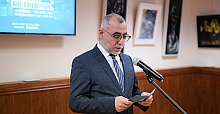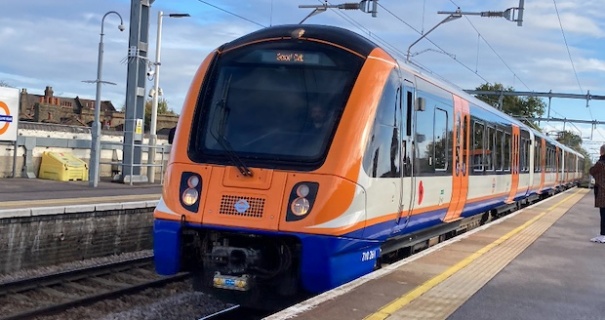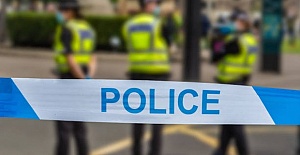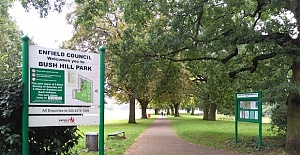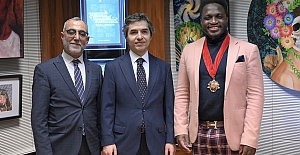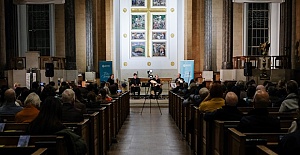The new names have been chosen through engagement with customers, stakeholders, historians, industry experts and local communities . New names, line colours and maps will make it easier for customers to navigate the London Overground and further build ridership, while celebrating London’s diverse communities and histories .In a historic re-imagining of London’s public transport network, each of London’s six overground lines will for the first time ever be given a unique name and line colour. This significant change, which will include a major update to London’s world-famous Tube map, will make it easier for customers to navigate London’s transport network while also celebrating the city’s diverse culture and history. Research by Transport for London (TfL) has shown that some customers find the London Overground network confusing and would find it easier to navigate if it wasn’t one single colour and name. Each route will be represented by a new line name and colour on the Tube map, on train line diagrams, at stations and on digital journey planning tools, such as TfL Go.
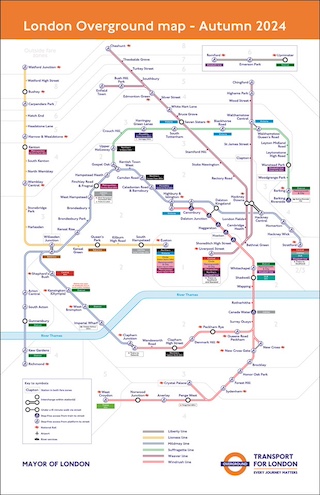
The much-loved orange roundel will continue to be used across the London Overground network. The new line names are:
The Lioness line: Euston to Watford Junction. The Lioness line, which runs through Wembley, honours the historic achievements and lasting legacy created by the England women’s football team that continues to inspire and empower the next generation of women and girls in sport. It will be yellow parallel lines on the map.
The Mildmay line: Stratford to Richmond/Clapham Junction. The Mildmay line, which runs through Dalston, honours the small charitable hospital in Shoreditch that has cared for Londoners over many years, notably its pivotal role in the HIV/AIDS crisis in the 1980s, which made it the valued and respected place it is for the LGBTQ+ community today. It will be blue parallel lines on the map.
The Windrush line: Highbury & Islington to Clapham Junction/New Cross/Crystal Palace/West Croydon. The Windrush line runs through areas with strong ties to Caribbean communities today, such as Dalston Junction, Peckham Rye and West Croydon and honours the Windrush generation who continue to shape and enrich London’s cultural and social identity today. It will be red parallel lines on the map.
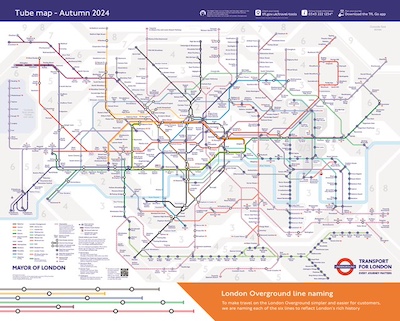
The Weaver line: Liverpool Street to Cheshunt/Enfield Town/Chingford. The Weaver line runs through Liverpool Street, Spitalfields, Bethnal Green and Hackney - areas of London known for their textile trade, shaped over the centuries by diverse migrant communities and individuals. It will be maroon parallel lines on the map.
The Suffragette line: Gospel Oak to Barking Riverside. The Suffragette line celebrates how the working-class movement in the East End, fought for votes for woman and paved the way for women’s rights. The line runs to Barking, home of the longest surviving Suffragette Annie Huggett, who died at 103. It will be green parallel lines on the map.
The Liberty line: Romford to Upminster. The Liberty line celebrates the freedom that is a defining feature of London and references the historical independence of the people of Havering, through which it runs. It will be grey parallel lines on the map.
Stakeholders, customers, historians, industry experts and communities have played a key role in suggesting the new names through independent engagement, which took place ahead of the decision for the final six names. This was key for the Mayor, as London’s diverse history and culture have always played a significant role in shaping the city and it was important for the line names, which will be used for years to come, to reflect this.
The Mayor of London, Sadiq Khan said: “This is a hugely exciting moment, transforming how we think about London’s transport network. “Giving each of the Overground lines distinct colours and identities will make it simpler and easier for passengers to get around. In re-imagining London’s tube map, we are also honouring and celebrating different parts of London’s unique local history and culture. “The new names and colours have been chosen through engagement with passengers, historians and local communities, reflecting the heritage and diversity of our amazing city.”
Andy Lord, London’s Transport Commissioner, said: “The London Overground is one of the most successful railways in the country and has grown to carry more than three million customers a week. The network, which has grown quite considerably since 2007, is currently shown as a complicated network of orange on route maps. This can be confusing for customers less familiar with the network and could be a barrier for some wanting to use the London Overground. These new names and line colours will simplify the maps and routes for our customers, and it is hoped it will encourage more people to make the most of our services. It is also a great way to tell the stories of some important parts of London’s cultural diversity.”
Mark Bullingham, Chief Executive Officer for The Football Association, said: “We’re so pleased to see the Mayor of London and Transport for London recognise the historic achievements of our England women’s team with the newly named Lioness line. The line honours the incredible victory in the UEFA Women’s EURO in 2022 at Wembley Stadium connected by EE, and the lasting legacy this team is creating in inspiring the next generation.”
Geoff Coleman, Chief Executive Officer for Mildmay Mission Hospital, said: “We are deeply honoured that the Mildmay line was chosen as one of the new London Overground lines names in recognition of the work of the dedicated doctors, nurses and support staff at the Mildmay Hospital. From its humble origins in the 1860s - serving the poorest people of the East End - to its pivotal role during the HIV/AIDS crisis in the 80s and 90s, Mildmay has evolved into an internationally renowned rehab centre, and our dedicated team continues to serve people from across London. More than just tracks and stations, the Mildmay line symbolises a journey of acceptance, love, and belonging – a vibrant thread connecting our collective past, present, and future.”
Arthur Torrington CBE, Co-founder and Director of the Windrush Foundation, said: “Windrush Foundation congratulates Transport for London for creating a new interest in travel on the Windrush line as part of the London Overground line naming project. We are reminded of the iconic journey of Empire Windrush and the contributions the Caribbean community have made to the capital over many decades. We are pleased to be recognised this way and look forward to seeing Londoners using the Windrush line.”
James Gaselee, Clerk for Worshipful Company of Weavers, said: “We are delighted that one of the newly named London Overground lines will be called the Weaver line in recognition of the silk weaving trade that was centred on Spitalfields; this is not however purely historic as the name of the line will also shine a light on the silk weaving, textile and fashion industries that continue to flourish in London and across the country”. Jemima Olchawski, Chief Executive of the Fawcett Society, said: "We owe so much to the courageous suffragettes and suffragists who campaigned hard and at significant personal cost for women to have the vote and we at Fawcett are delighted that their activism is being recognised by TfL. We hope that commuters on the Suffragette line will pause to think about these amazing women and the work they did to build our democracy. The Fawcett Society, founded by Millicent Fawcett in 1866, and strengthened by our members today is proud to continue this legacy of feminist campaigning for a more equal society. The naming of the Suffragette line is a wonderful way to pay tribute to the women who have gone before us and to inspire the next generation of feminist campaigners, as our work isn’t yet done!" Julie Frost, BID Director for Romford BID, said: "The Romford BID welcome the announcement that the Romford to Upminster branch line now has a new name; the Liberty line. This is a very fitting name as it speaks to our Borough's centuries old status as a Royal Liberty. Back then, this shared status helped to bound our different communities together. What better way to keep alive the spirit of this association than by renaming a key piece of our local transport infrastructure. We hope passengers will be further encouraged to use the new Liberty line to come and see all the many things we have on offer in Romford". London Overground first began in 2007 when TfL took over four under-used suburban railway lines. The network has since grown, meaning it has now become represented by a spaghetti of orange on the Tube maps. The Mayor was committed to help simplify this for customers with a new line name and colour for each line, and with names chosen to showcases London’s rich history, heritage and diversity.


 After Nesil Caliskan a by-election will be held in Jubilee ward in Enfield
After Nesil Caliskan a by-election will be held in Jubilee ward in Enfield Publishing the analysis, Labour’s Cllr Ergin Erbil said Everybody in Enfield deserves basic rights
Publishing the analysis, Labour’s Cllr Ergin Erbil said Everybody in Enfield deserves basic rights Gaza-Israel conflict Statement from Cllr Ergin Erbil, Leader of Enfield Council
Gaza-Israel conflict Statement from Cllr Ergin Erbil, Leader of Enfield Council Cllr Ergin Erbil was elected as the new Leader of Enfield Council
Cllr Ergin Erbil was elected as the new Leader of Enfield Council The European Union called on Turkey to uphold democratic values
The European Union called on Turkey to uphold democratic values Turkish citizens in London said Rights, Law, Justice
Turkish citizens in London said Rights, Law, Justice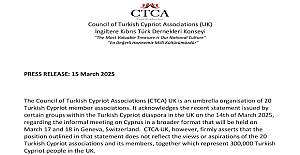 The Council of Turkish Cypriot Associations Geneva response letter
The Council of Turkish Cypriot Associations Geneva response letter Sustainable Development and ESG, Will This Become the Course for Turkic World
Sustainable Development and ESG, Will This Become the Course for Turkic World Saran Media And Euroleague Basketball Extend Media Rights Partnership for Four More Years
Saran Media And Euroleague Basketball Extend Media Rights Partnership for Four More Years Will Rangers be Jose Mourinho’s next victim?
Will Rangers be Jose Mourinho’s next victim? Jose Mourinho's Fenerbahce face Rangers on Thursday
Jose Mourinho's Fenerbahce face Rangers on Thursday Inzaghi stated that they felt the absence of our national player Hakan Çalhanoğlu
Inzaghi stated that they felt the absence of our national player Hakan Çalhanoğlu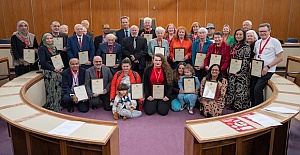 Enfield Council at a special awards ceremony
Enfield Council at a special awards ceremony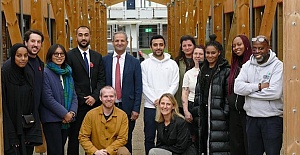 Enfield Council continues to invest in Edmonton, supported by £11.9 million in funding
Enfield Council continues to invest in Edmonton, supported by £11.9 million in funding Survey shows improvements in Enfield Council’s housing services
Survey shows improvements in Enfield Council’s housing services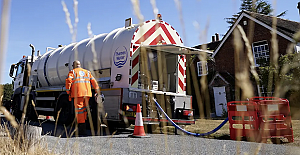 Why is Thames Water in so much trouble?
Why is Thames Water in so much trouble?


